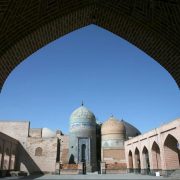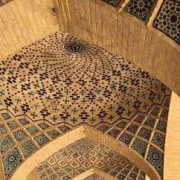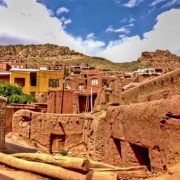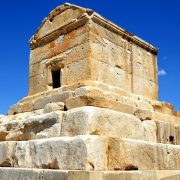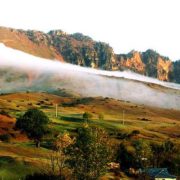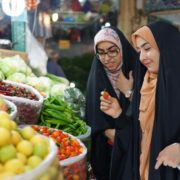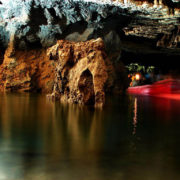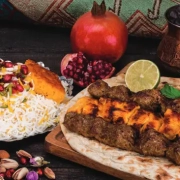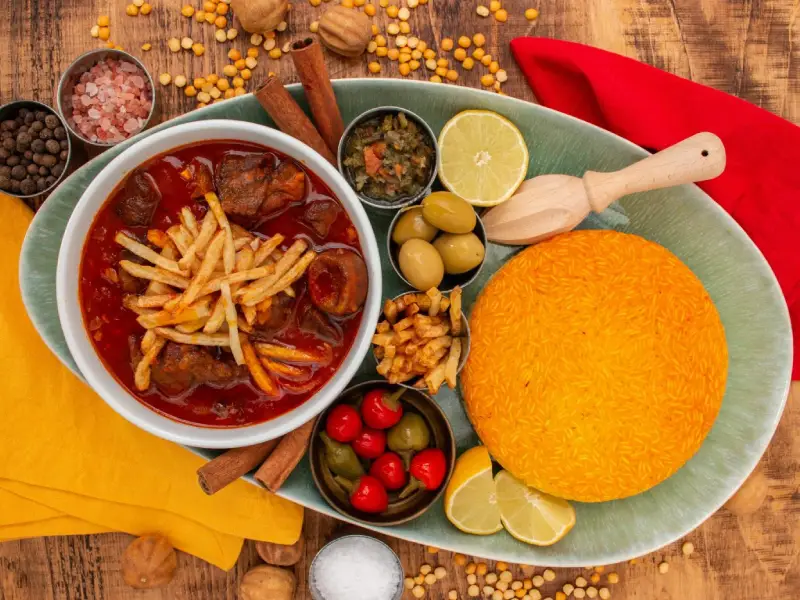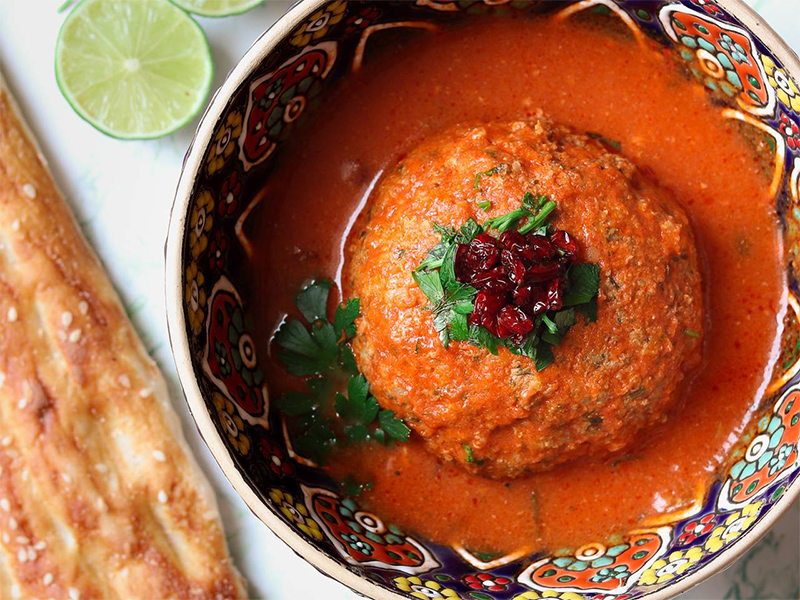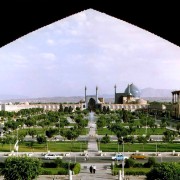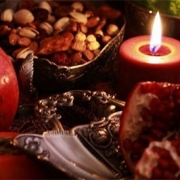Travel to Iran would probably be like none of your previous trips, it is certainly a unique destination you never expect. There are loads of unique experiences waiting for you here, including cultural attractions, natural beauty, warm-hearted hospitable people, and tasty local foods.
Well, the next issue might be your safety. While you are searching is it safe to travel to Iran, it is never easy to distinguish between propaganda and genuine information. The two risk assessment institutions “International SOS” and “Risk control” evaluate Iran’s risk to travelers to be comparable to that of most European countries’.
Iran Doostan Tours Co. is a reliable Iran travel agency for incoming tours to Iran. No difference whether you are aiming to travel to Iran from Canada or travel to Iran from India, or any other country, we are honored to offer high-quality services in terms of diverse package tours. As a tour operator and travel agency in Iran, we provide all travel services including itineraries, visa, tour guides, transportation, accommodation, and whatever our tourists may need while traveling to Iran. If you are looking for some self-drive tours like travel to Iran by car, we are also ready to provide you with all you may need.
It is good to know that the Iran visa process is quite fast and convenient and the tourists can also apply for a visa online. However, if you intend to travel to Iran from the UK or US, your visa may take a bit longer to be issued.
If you have a call for an independent traveling to Iran, we wholeheartedly respect your decision; then all you may need to have except an Iran travel guide book and a map would be reading some tips for traveling to Iran in our Iran travel blog. For any travel to Iran experience, you are recommended to visit our guest blog and also our trip advisor page, it may be helpful. You may also like to spare some time watching interesting Iran tourism videos to whet your appetite for traveling to Iran.
Our professional colleagues are ready to help you if you have planned to travel to our country. Contact us via info@idt.ir. We will be back to you soon.
Posts
Abyaneh Village, Red Village of Iran: History, Photos & more
Abyaneh is a historic village in Isfahan province of Iran close to Kashan and Natanz. The village is in a long and narrow valley on the foot of Karkas Mountains, 70 kilometers southeast of Kashan. From the main road of Natanz-Kashan, there is a winding road that goes 22km deep into the mountains, passes several villages, and reaches to a valley with a historic village sitting in it. Houses in Abyaneh have a reddish color that comes from the soil around the village containing iron oxides.
The alleys are narrow with mud brick houses on both sides with beautiful lattice windows and small balconies looking over the alley.
Similar to other mountainous villages of Iran, Masouleh or Uraman Takht, Abyaneh has stepped structure with the roof of each house being the courtyard of the one above it.
How old is Abyaneh?
There is no evidence to indicate the exact date of the village but historians know that it has been around since Sassanid dynasty (700 AD) for sure. The houses sit on the mountain slope facing east to receive the maximum sunlight and they are from Sassanid, Seljuks, Safavid, and Qajar eras.
Karkas Mountains and its surroundings were the hunting area for Safavid kings and Abyaneh was the destination for their summer vacation. Abyaneh’s high elevation (2222m) causes cool summer and very cold winter days.
Because of its mountainous setting, Abyaneh stayed isolated for many years and people’s customs and language is untouched and preserved. In Abyaneh people speak Farsi with a special dialect belonging to the village only. They still use some words from the Parthian era (247 BC – 224 AD).
Men wear a very loose pair of pants and the women’s traditional costume consists of a long colorful dress, along with a special pair of pants, and a white long scarf with colorful floral design named Charghad.
Besides the charismatic beauty of the village, there are historic monuments as well. There is a Zoroastrian fire temple dating back to the Sassanid period, three castles, a pilgrimage site, and two mosques. The most famous monument of Abyaneh is an 11th-century Jameh Mosque, with an ancient Mihrab made of walnut-wood covered with carvings of calligraphy and floral designs. The Jameh Mosque is closed and cannot be visited because of its very long and valuable history.
Are you planning to travel to Iran? Check out our Iran tours.
10 Famous Persian Dishes (Photos, Video, Info)
Persian cuisine is not just ancient and cosmopolitan; it is also therapeutic for the body and soul. The legendary physician and philosopher Avicenna describes in his great book “The Canon of Medicine” the healing and beneficial aspects of different foods, fruits, and vegetables for the body. When you travel to Iran, you can learn more about Iran foods and drinks. Every city in each province of Iran has hundreds of local dishes for every season of the year. How fascinating is that? Therefore, we picked the most famous Persian dishes you must try on your visit to Iran.
Fesenjan
Fesenjan is one of the most popular stews, made with pomegranate sauce, walnut, and chicken or ground beef. It is a local food from the northern part of Iran and has a sweet and sour taste. In some regions, locals make this stew with meatballs or lamb. Adding orange zest, whole pomegranate seeds, butternut squash, or dried apricots is traditional in other parts. It is not a regular item on restaurant menus since it’s usually served on special occasions such as weddings or formal parties.
There is a wide variety of Iranian stews as famous Persian dishes. Each region of the country has its unique stew made of its own local and seasonal ingredients. The three main stews in Iran are Fesenjan, Gheymeh, and Ghormeh Sabzi, and all are served with Chelo (white, fluffy rice).
Iranians are proud of their skills in preparing rice, and there are different ways to cook them, such as Chelo, Polo, Abkesh, and Kateh. Chelo is fluffy Persian rice with some saffron rice on top. Polo is mixed rice usually served with chicken, lamb, beef, or fish. Zereshk Polo is one of the most popular Polos that has Persian barberries and saffron, and you mostly see it served with chicken. Another is dill and lima bean rice usually served with lamb shank next to the chicken. There is an individual meal called Tahchin that is entirely made with rice!
Tahchin
Tahchin is a kind of rice cake with four layers. First, the lowest layer is a mixture of cooked rice, yogurt, egg, and saffron. The second layer consists of flavored rice and Persian spices such as saffron or turmeric. The third layer contains cooked chicken pieces, and the last layer is spicy rice. Iranians, generally, are very fond of Tahdig. In Tachin, it is essential to add a crispy layer of Tahdig on the upper part of the Tachin to bring a touch of lusciousness to this traditional Iranian food.
Biryani
In addition to enjoying the gorgeous mosques, ornate domes, and ancient bridges in Isfahan, the Biryani is another highlight of this city. This dish is made with shoulder lamb and onions. First, the lamb is cooked through a particular process and then soon after fried. In the end, the lamb will be ground or chopped very finely. The result is a highly aromatic and colorful dish of meat and rice. Our lovely Isfahani locals serve Biryani on bread and decorate with some cinnamon on top.
Kebab
You will most definitely see Kebabs on the menus of restaurants since it is one of the most famous Persian dishes. Kebab is grilled meat such as filet mignon, chicken, ground beef, or fish served with Chelo with grilled tomato and pepper. The most famous Persian kebabs you come across in Iran are Joojeh Kebab and Koobideh, Iranians’ all-time favorites, and they sometimes have Naz Khatoon and Dough beside their dish. During your travel to Iran, do not miss this tasty meal!
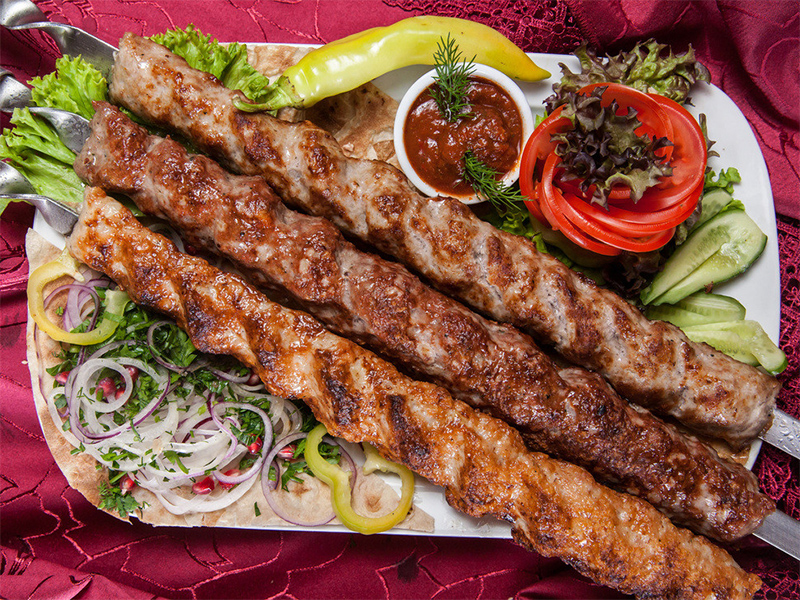
Persian Dishes – In the Iranian restaurant menus you will mostly see Kebabs; one of the bests in Persian Cuisine.
Ghormeh Sabzi
The delicious Ghormeh Sabzi, or as some people might call it, the king of the stews, is on another level. Ghormeh Sabzi is the hallmark of Iranian food that dates back more than 2000 years. You would rarely find someone who does not love Ghormeh Sabzi. Ghormeh Sabzi is served in most restaurants as lunch or dinner. The ingredients are kidney beans, a mixture of herbs, and dried limes. Nothing surpasses Ghormeh Sabzi when it comes to its taste and texture as a dish.
Gheymeh Nesar
Imagine the taste of Persian barberries, pistachio, cinnamon, rose water, turmeric, and saffron. It will take you to the magnificent feast of a Persian king in his exotic palace surrounded by gorgeous decorations on the walls and silk carpets on the floor. Gheymeh Nesar of Qazvin is one of the bests in Persian Cuisine. It is a food mostly made for special events. The topping of the rice has almond, pistachio, orange pill slices, Persian barberries, and lamb meat, which creates an unforgettable taste.
Gheymeh
The other favored stew is Gheymeh, but this one is pretty common in most restaurants in the country. The word Gheymeh comes from how the meat is cut into small cubes in this recipe. Gheymeh is a traditional and popular Iranian stew with saffron potatoes, served with either white or aromatic rice. The main ingredients of this tasty stew are tomato paste, lintels, dried lime, and beef with the addition of French fries or eggplants on top instead. Khoresht-e Gheimeh can turn into Gheymeh Bademjan by adding eggplants to the stew.
Dizi or Abgoosht
Dizi is quite different from other foods, and that’s why Abgoosht is among the most famous Persian dishes in Iran. The ingredients are lamb, tomato, onion, potato, chickpeas, and different seasonings such as turmeric. The juice is separately served, so you can dip Persian bread in it and enjoy it. The solid materials will be mashed and mixed and served with broth. Usually, you can eat pickles or yogurt with Dizi and fully enjoy the fascinating taste of traditional Persian food.
Ash Reshteh
Ash Reshteh is the traditional Iranian version of noodle soup, cooked with beans, peas, and vegetables. With a strong taste of the dried mint powder. The soup is garnished with a salty dairy sauce named Kashk. That’s why it also is called Ash-e Kashk. The name makes sense, as “ash” translates to thick soup and “reshteh” to noodle! Ash Reshteh is a great option that will leave you satisfied and full of energy for quite some time!
Kofte Tabrizi
If you are visiting Tabriz during your stay in Iran, make sure you try the most famous Persian dish of the city, Kofteh Tabrizi. Kofte Tabrizi is a super meatball made of ingredients such as rice, ground beef, yellow split peas, leeks, mint, parsley, onion, walnuts, dried apricots, barberries, and Persian spices, cooked in tomato paste. Some like to stuff the meatballs with prunes, walnuts, and fried onions until it cooks slowly to perfection.
Are you planning to travel to Iran? Check out our Iran tours.
Naghshe Jahan Square (Naqsh-e Jahan)
Every day in the tranquility of morning the sun rises over Naghshe Jahan Square and shines over the mosaic work of Sheikh Lotfollah Mosque to create a beautiful scene with cream and pink colors in front of your eyes.
Naghshe Jahan square is a showcase of the Safavid Dynasty, which makes it obvious to every visitor who takes a tour to Iran that Isfahan was the capital of Persia not too long ago.
The three main components of power in Persia during the Safavid days are present at Naqsh-e Jahan square. The bazaar as the merchant’s power, the mosque as the clergy’s, and the palace as the king’s power are gathered in this square.
Around Naghshe Jahan square sits hundreds of stores selling handicrafts unique to this city.
Two striking mosques face Imam Square. The smaller one, Sheikh Lotfollah was built for the women of the Shah’s harem. In your tour to Iran, if you have had a precise look at the numerous mosques of the country, you probably have realized that minarets and courtyards are among the main parts of a mosque. But Sheikh Lotfollah’s neither has minarets nor a courtyard because it was not for public use and the Shah decided to make it special.
Lattice windows, exquisite tile work, and elaborate decorations with light Turkish blue and dark Persian blue make the Imam mosques’ atmosphere calming and spiritually healing. Islam forbids images therefore mosques have decorative designs and scripts.
And there is the Shah’s palace on the opposite side of Sheikh Lotfollah Mosque. A six-story palace named Ali Qapu meaning “The Great Gate”. The king of Persia would sit on the terrace on the third floor of Ali Qapu to watch Chowgan (polo), maneuvers, and horse racing with his special quests. The walls and ceilings of rooms, corridors, and stairways are decorated by stunning paintings of Safavid artists.
Naghshe Jahan Square, a vitrine of the most beautiful artistic works from the Safavid era, became a UNESCO World Heritage site in 1979 and is the highlight of every culture tour to Iran.
If you are planning to visit Iran, here is the link to Iran online visa form.
A Persian Thanksgiving on Yalda Night
The origin of Yalda Night
On the days that Zoroastrianism was the official religion in Iran on the last night of autumn people would stay at a cave and watch the sunrise, the birth of Mithra, on the next morning. Today after thousands of years people do not celebrate this night in the same manner they did in the days of Zoroaster. Today, the name of Yalda reminds people that on this important night of the year they must gather up and enjoy each other’s company on the longest night of the year. At this night Iranians believe that the best way to appreciate the extra minutes to enjoy the company of the family and loved ones.
How is Yalda celebrated in different cities in Iran?
You may be surprised to know that Iranians celebrate Thanksgiving too, but in their own manner and in a different time. Actually, Yalda night is a thanksgiving night for Iranians. Everyone gathers in the grandparents’ house and they say praying to thank the lord for the previous year’s blessings and to increase the next year’s health, wealth, and joy. Staying up till dawn to celebrate this night and reading the poems of Divan-e Hafez is the tradition for celebrating Yalda. On Yalda our ancestors lit the fire for extra lightening to help the dawn to overcome this longest darkness.
People of Tonekabon, one of the Northern cities of Iran, believe that they must have 40 different snacks for the night. In Khorasan, people make a sweet called Kaf at this night through a very happy ceremony called Kafzani.
Like any other celebrations, Yalda has its own food and snacks and every item has found its way on the table for a good reason. Pomegranate, one of the main fruits of the night protects us from the evil spirits which are at their peaks on this longest darkness of the year. The delightful taste of pomegranates with angelic powder can truly give you the superpower to overcome the Ahriman (enemy in Farsi)!
You will see watermelon and mixed nuts on the table for sure. In the past years that fruits were available in the season only the host, usually the oldest in the family, would carefully save grapes and watermelons for the upcoming Yalda. Eating the mixed nuts will bring days full of prosperity and watermelon and yogurt will save you from the hot days of the summer days.

A simple yet gorgeous design of fruits and nuts to celebrate Yalda Night in Iran.
There is a tradition similar to the “trick or treat” on Halloween night. The bachelorettes cover up their faces, so they couldn’t be recognized, and they knock on the neighbor’s door and ask for a treat. If seven houses did not recognize young girls whatever they wished for will be granted.
In Persian literature Yalda night has been associated with loneliness and the long wait to meet the loved one as Sa’adi says:
‘The sight of you each morning is a New Year Any night of your departure is the eve of Yalda’
Are you planning to travel to Iran and looking for an Iran travel agency? Check out our Iran tours.

